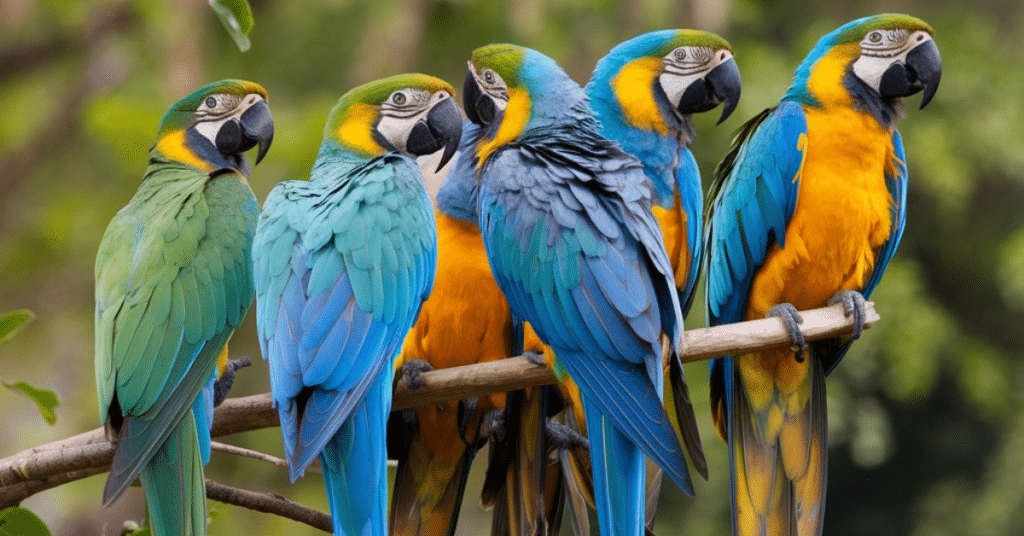Florida’s lush landscapes and subtropical climate provide an ideal home for many fascinating creatures, including a variety of Parrots In Florida. Among these are numerous wild parakeets, captivating birdwatchers and nature lovers alike. This comprehensive guide delves into the various parrot species in Florida, their behaviors, habitats, and the ecological impacts of invasive parrot populations.
Are There Parrots in Florida?
Absolutely! Florida is home to a vibrant array of parrots, largely due to its favorable climate, which mimics the natural habitats of many tropical birds. Over the past few decades, a combination of factors has led to the establishment of a robust population of invasive parrots across the state.
Historical Context
In the late 20th century, the pet trade significantly influenced the avian landscape in Florida. Many parrots that were once kept as pets either escaped captivity or were released by their owners. As a result, Florida has become a refuge for several parrot species that thrive in its warm climate.
Current Distribution and Habitats
Today, you can find wild parakeets in various regions of Florida, from urban areas to rural landscapes. They often inhabit parks, residential neighborhoods, and natural reserves. The state’s diverse ecosystems, including wetlands, forests, and coastal areas, provide ample resources for these birds, allowing them to flourish.
Types of Parrots in Florida
Florida is home to several notable parrot species, each with unique characteristics and behaviors. Let’s take a closer look at some of the most prominent ones:
Blue-crowned Parakeet

- Scientific Name: Aratinga acuticaudata
- Identification: The Blue-crowned Parakeet is easily recognized by its bright green plumage and the distinctive blue crown on its head. Adults typically measure about 12 inches in length, with a wingspan that can reach up to 18 inches.
- Behavior: These birds are known for their social behavior, often found in flocks that can range from a few individuals to several dozen. Their diet primarily consists of seeds, fruits, and nuts, showcasing a preference for tropical plants.
- Habitat Preferences: They thrive in open woodlands, urban parks, and gardens, often nesting in tree cavities or abandoned structures. Their adaptability makes them a common sight in many Florida cities.
Mitred Parakeet
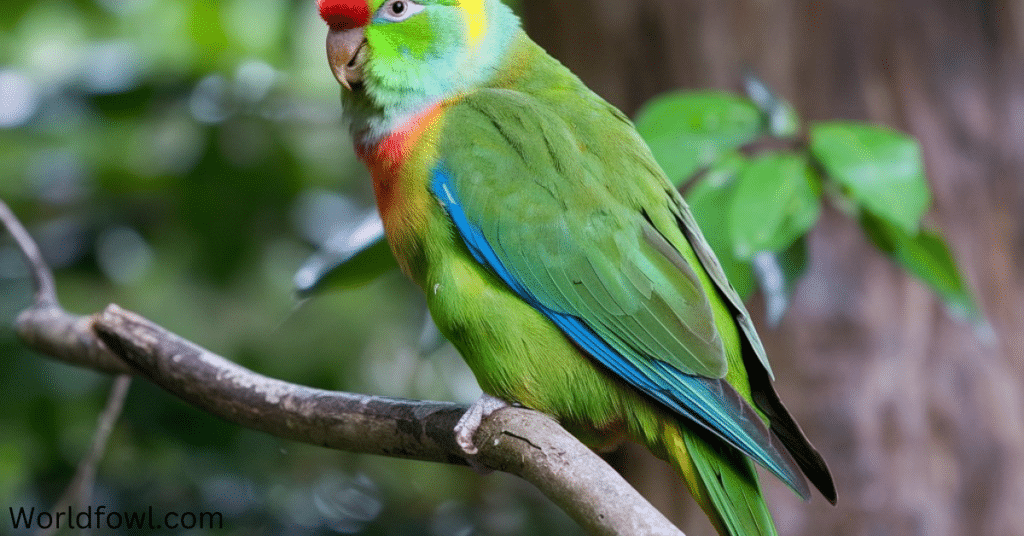
- Scientific Name: Psittacara mitratus
- Identification: Known for its vibrant green body and striking red forehead, the Mitred Parakeet typically measures around 12 to 14 inches long. Their bright plumage makes them visually appealing and easily identifiable.
- Social Structure: These parakeets are highly social, often seen in flocks ranging from small groups to large assemblies. Their vocalizations include a series of high-pitched calls, which serve to maintain group cohesion.
- Conservation Status: While they thrive in Florida, Mitred Parakeets face declining populations in their native regions due to habitat loss and hunting. Conservation efforts are crucial to ensure their survival.
Monk Parakeet
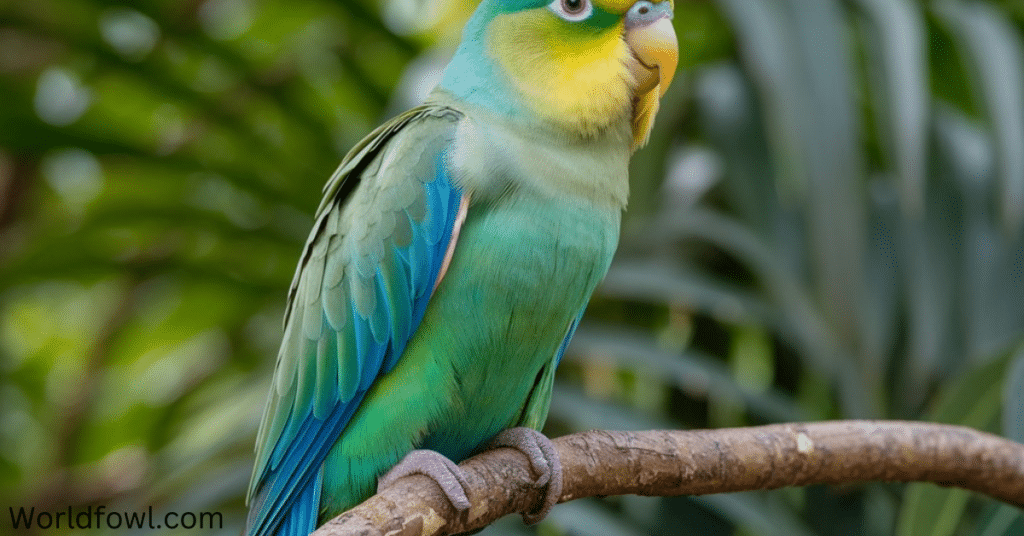
- Scientific Name: Myiopsitta monachus
- Identification: The Monk Parakeet is notable for its gray-green feathers and distinctive green back. They are approximately 12 inches long and have a robust build, which enhances their ability to adapt to various environments.
- Adaptability: These birds are incredibly adaptable, thriving in both urban and rural settings. They are known for their large, communal nests, which can weigh hundreds of pounds and are often constructed in trees, utility poles, and buildings.
- Impact on Ecosystems: The Monk Parakeet is one of the most prevalent invasive parrots in Florida. While they contribute to the local ecosystem, they can also compete with native bird species for resources, which raises concerns among conservationists.
Nanday Parakeet
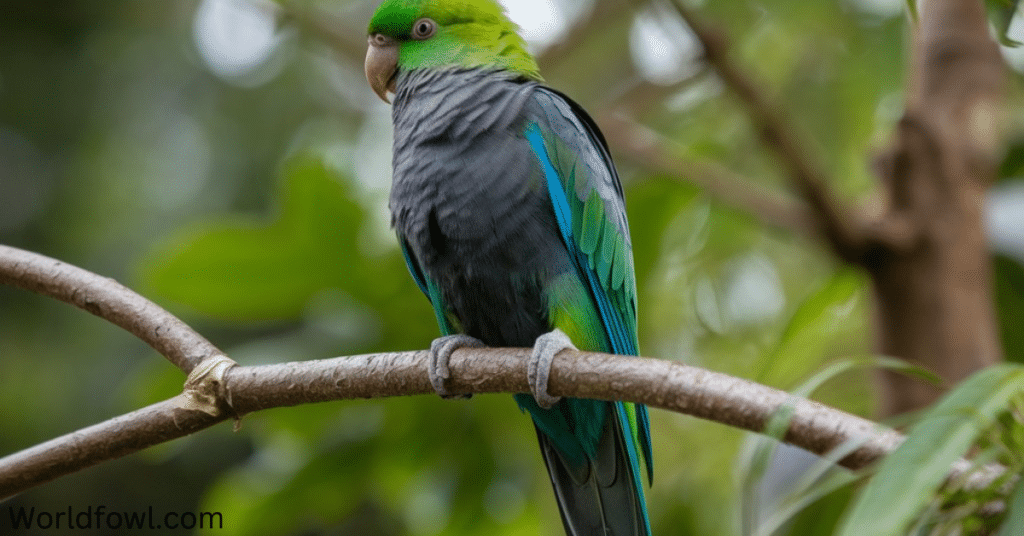
- Scientific Name: Aratinga nenday
- Identification: The Nanday Parakeet is characterized by its striking black head and bright green body, reaching lengths of around 12 inches. Their bold coloration makes them a favorite among birdwatchers.
- Behavior: Known for their playful and energetic nature, Nanday Parakeets engage in acrobatic displays and vocalizations that can be quite loud. They often form tight-knit social groups.
- Habitat Range: These parakeets prefer open woodlands and urban areas, where they can find plenty of food sources, including seeds and fruits.
Red-masked Parakeet
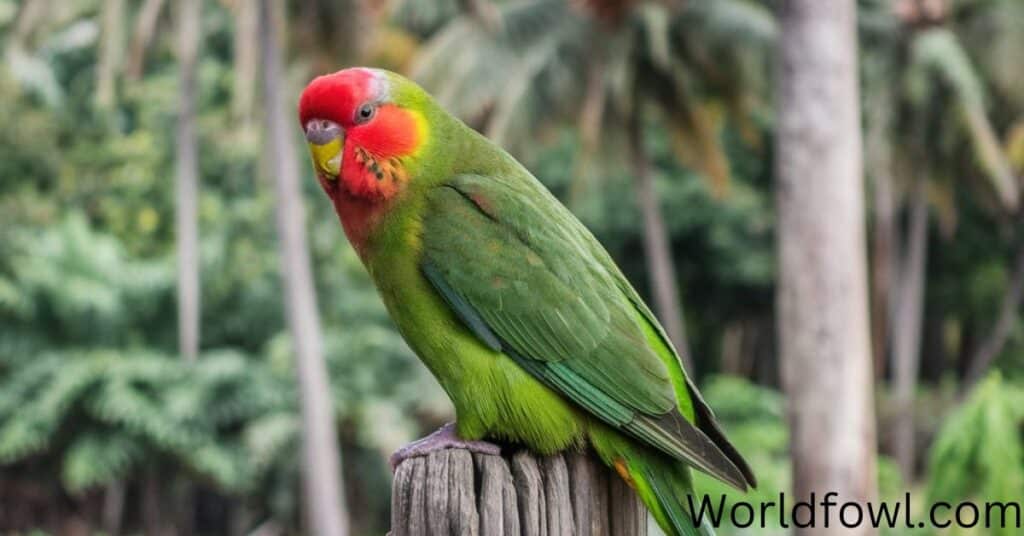
- Scientific Name: Psittacara erythrogenys
- Identification: The Red-masked Parakeet features a striking red face and a green body, reaching lengths of about 12 to 14 inches. Their vibrant coloration and vocalizations make them easy to spot in the wild.
- Challenges: The Red-masked Parakeet faces threats from habitat destruction, which impacts its breeding success. Conservation efforts are necessary to protect their nesting sites.
Yellow-chevroned Parakeet
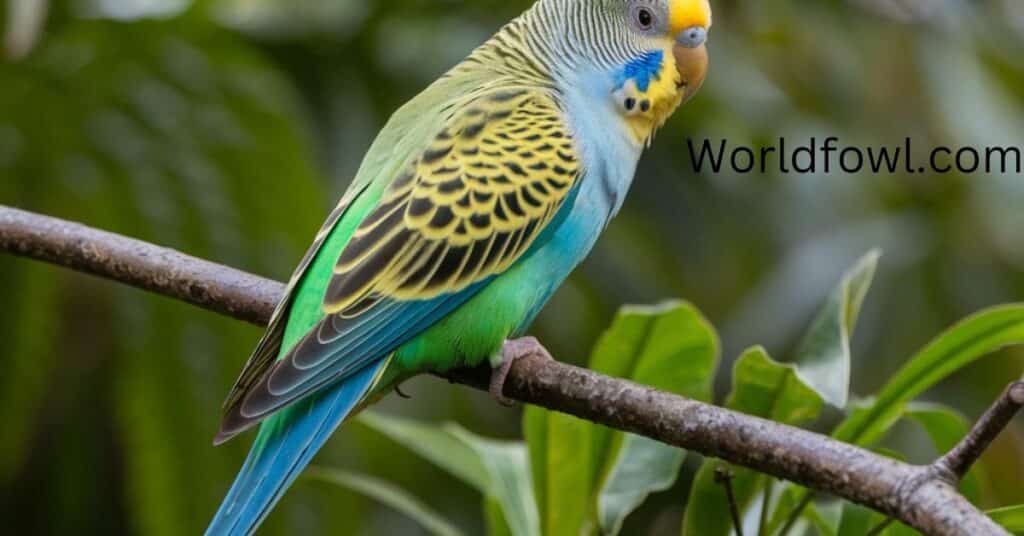
- Scientific Name: Brotogeris chiriri
- Identification: Recognizable by its bright green color and yellow markings on the wings, the Yellow-chevroned Parakeet is about 7 to 8 inches long, making it one of the smaller parakeet species in Florida.
- Behavior: These birds are known for their playful demeanor and are often seen foraging for seeds and fruits in small flocks. Their social nature contributes to their success in urban environments.
- Interactions with Other Species: Yellow-chevroned Parakeets often mix with other parakeet species, showcasing a diverse social structure that helps them thrive.
Why Are There So Many Invasive Parrots in Florida?
The increase in invasive parrots in Florida can be attributed to several key factors:
Climate
Florida’s warm climate mimics the natural habitats of many tropical birds, providing an ideal environment for them to thrive. The state’s mild winters and abundant food sources allow parakeets to establish stable populations.
Pet Trade
The pet industry has played a significant role in introducing non-native species to Florida. Many pet owners release their birds when they can no longer care for them, contributing to wild populations. This practice has led to the establishment of various parrot species that now call Florida home.
Adaptability
Parrots like the Monk Parakeet have demonstrated remarkable adaptability, allowing them to thrive in urban environments. Their ability to exploit various food sources and nesting sites has enabled them to flourish despite competition from native species.
Ecological Consequen.
In some cases, invasive parrots may outcompete native species for food and nesting sites, leading to declines in local biodiversity.
Are There Parrots Native to Florida?
Historically, Florida had native parrot species, but today, the only parrot species native to the southeastern United States was the Carolina Parakeet, which became extinct in the early 20th century due to habitat destruction and hunting. The extinction of the Carolina Parakeet highlights the fragility of avian populations and the impact humans can have on their survival.
Current Conservation Efforts
Today, conservation efforts in Florida focus primarily on managing the issues posed by invasive species while attempting to restore native bird populations. These efforts include:
- Public Education: Informing the public about the importance of native species and the consequences of releasing pets into the wild.
- Habitat Restoration: Initiatives aimed at restoring native habitats to support local wildlife.
- Research Projects: Ongoing studies to track parrot populations and their effects on ecosystems.
Observing Parrots in Florida
If you’re eager to spot wild parakeets in Florida, here are some tips:
Best Locations for Spotting Wild Parakeets
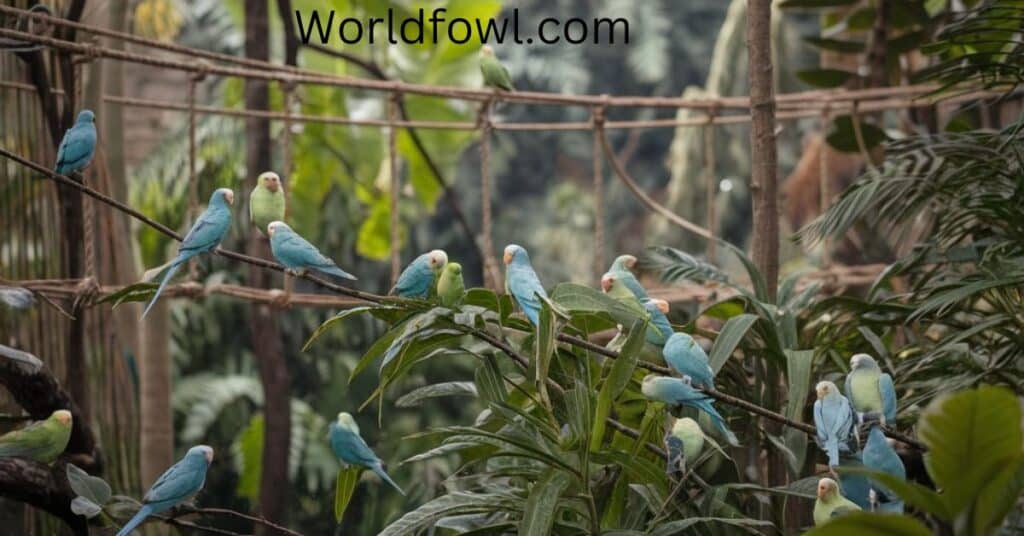
- Miami-Dade County: Known for its vibrant parrot populations, especially Monk and Nanday Parakeets, this area is a hotspot for birdwatchers.
- Biscayne National Park: Offers a natural habitat for various parrot species, providing opportunities for birdwatching in a serene setting.
- Urban Areas: Many parakeets thrive in cities, making parks and residential areas prime spots for observation.
Tips for Birdwatching
- Use Binoculars: A good pair of binoculars can enhance your viewing experience and help you spot these colorful birds from a distance.
- Be Patient: Parrots can be elusive, so patience is key. Spend time in quiet areas to increase your chances of spotting them.
- Observe Behavior: Take note of their social interactions and foraging habits for a more enriching experience.
Ethical Considerations
When observing Florida birds, always respect wildlife and their habitats. Avoid disturbing nesting sites and keep a safe distance to minimize stress on the birds. Remember, the goal is to appreciate these beautiful creatures without interfering with their natural behaviors.
Conservation and Management Efforts
Florida’s unique ecosystems require ongoing conservation efforts to protect both native and non-native species. Various organizations and government bodies work together to manage parrot populations and their impact on the environment.
Local and State Initiatives
- Monitoring Programs: Regular assessments of parrot populations help track changes and inform management strategies. These programs often involve citizen scientists who contribute valuable data.
- Community Engagement: Programs that involve local communities in conservation efforts foster a sense of responsibility and awareness. Community-led initiatives can be highly effective in promoting positive environmental practices.
- Research Collaborations: Partnerships between universities and wildlife organizations aim to study the effects of invasive parrots on native species. These collaborations often lead to innovative solutions to conservation challenges.
How to Support Parrot Conservation in Florida
You can contribute to conservation efforts by:
- Participating in Local Programs: Join birdwatching clubs or conservation organizations to stay informed and active in your community. Engaging with fellow enthusiasts can enhance your understanding of local avifauna.
- Advocating for Wildlife Protection: Support policies that aim to protect Florida’s native species and habitats. Writing to local representatives or participating in public meetings can amplify your voice.
- Educating Others: Share your knowledge about the importance of maintaining healthy ecosystems and the threats posed by invasive species. Outreach efforts can help raise awareness and inspire action.
Case Studies: Invasive Parrots in Florida
Monk Parakeet: A Case Study
The Monk Parakeet serves as an excellent case study for understanding the impact of invasive parrots in Florida. Originally from South America, these birds have successfully established populations in urban areas across the state. Their adaptability and social behavior have made them particularly successful.
- Population Growth: Since their introduction, Monk Parakeets have flourished, with estimates suggesting that there are now tens of thousands of individuals in Florida.
- Ecological Impact: While they have become a beloved sight in many neighborhoods, their nesting habits can cause problems. Monk Parakeets build large nests that sometimes damage utility poles and structures.
- Management Strategies: Local authorities have implemented various management strategies to address the challenges posed by Monk Parakeets, including public awareness campaigns and nest monitoring programs.
Nanday Parakeet: A Case Study
Another example is the Nanday Parakeet, which has also established a significant presence in Florida.
- Population Dynamics: Nanday Parakeets were first reported in Florida in the 1980s, and their populations have since grown, particularly in urban areas.
- Behavioral Observations: These parakeets are known for their loud calls and social behaviors. Observations show that they often intermingle with other parakeet species, contributing to a dynamic avian community.
- Impact on Native Species: Research indicates that Nanday Parakeets may compete with native birds for resources, raising concerns among conservationists.
Conclusion
The parrot population in Florida is a fascinating blend of native and invasive species, each with unique characteristics and challenges. Understanding the dynamics of Florida parrots, including the various wild parakeets, helps us appreciate the complexity of our ecosystems. As we engage in conservation efforts, we not only protect these beautiful birds but also contribute to the health of Florida’s natural world.
By observing and supporting these vibrant species, we play an essential role in preserving their future. Whether you’re a birdwatching enthusiast or simply someone who appreciates nature, take a moment to enjoy the colorful presence of Florida parrots. Get involved, learn more, and help ensure that these remarkable birds continue to thrive in the Sunshine State.
As you embark on your journey of discovery, remember that every observation contributes to a larger understanding of our environment. Together, we can celebrate the beauty of Florida’s avian inhabitants and work towards a brighter future for all.

Henry James is a seasoned blogger and a passionate storyteller on “World Fowl.” With years of experience crafting engaging content, he brings a unique blend of expertise and creativity to his writing. Henry specializes in exploring diverse topics with depth and clarity, captivating readers worldwide.

